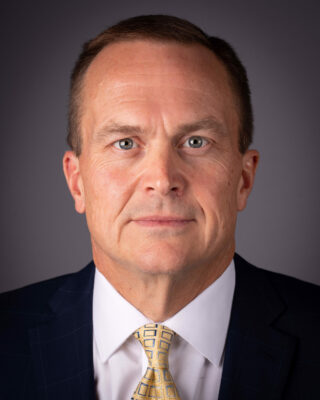HOME | ABOUT US | MEDIA KIT | CONTACT US | INQUIRE
HOME | ABOUT US | MEDIA KIT | CONTACT US | INQUIRE
Q: Last year, the early estimates of COVID impact on fall 2020 enrollment pricing were pretty conservative—in the range of 1-2 percent or so. Is that how things shook out by year’s end?

A: I think that’s in line with what we saw; it varied a bit by geography. When you think about the overall cost impact for testing and treatment, a lot of it was offset by a significant reduction in demand for services. As they came back into the system, costs returned to normal, and in some cases, we did see increases, depending on the type of services.
Q: Have you drawn any new conclusions about the way services are being accessed as a result of the past year’s experience?
A: I don’t think we foresaw it, but the silver lining has been the change in how and where we saw services. ER was down 40 to 50 percent, and still is down 20 percent. With telehealth utilization early on, prior to COVID-19, we were seeing utilization in the low single digits—2-4 percent, depending on the market. At some point, that went up to 80-90 percent of visits, and has leveled off to perhaps 20-30 percent, but at the high end of that range, that’s a 10-fold increase in telehealth utilization.
Q: What will the impact of that trend be?
A: It’s hard to say short term, but for the longer term, any time you can look at a more appropriate site of service, one that’s more cost-effective, more efficient, that will lower the overall cost of care. And it’s more convenient—you can get it from your home or office, you don’t have to take sick kids out of the house. It helps you see your doctor more often, and we’re huge believers in primary care as the best way to access care. The more you get to visit a primary-care physician and work with them, whether in the office or virtual, we believe that in the long term, that will have a positive impact on the costs of health care.
Q: With all the elective procedures and other visits put on hold through the early part of the pandemic, will there be a surge in demand for treatments coming out of this?
A: We’re starting to see a bit of it, and it varies widely by the type of service. Care was more likely to be delayed by people for mammograms, colonoscopies—we saw a lot more of a decline than in patient treatments where it was more an emergent-type procedure. The CDC was the one who said early on that they thought numbers were around a 41 percent reduction in avoided medical care cause of COVID; that tracks closely with early in the pandemic. We saw numbers 20-30-40 percent in certain lines of service, with almost no reduction in other lines, like pharmacy.
Q: Any worries as the patient trends revert to norms?
A: The one concerning thing we see is when you look at the potential impact of long-term costs of delayed screenings, but it’s hard to tell what might be. If you didn’t catch a new diagnosis early because of a delayed mammogram or colonoscopy, it’s hard to tell just yet what the long-term cost impact might be.
Q: Specific to the insurance world, what were the takeaways from managing through a crisis like this? What did you learn about yourselves, and the industry?
A: I was really impressed with how we responded as an organization out of the gate. Everybody was looking at an unprecedented situation. But we buckled down, looked at our employees, asked what can we do to make sure they remain healthy, support them and their families, and do their jobs, be efficient and effective in how we interact with customers. The entire work force went virtual, and that’s no small feat. I’ve talked to brokers, consultants and clients, and I think we did as well or better than anyone in how we responded to needs, provided information on trends or the latest opportunities on testing and treatment as they came around with vaccine. As an organization, we focused heavily on capacity and moved toward making sure our membership was informed around what was happening with all things COVID. It’s tough, being prepared for something nobody could have anticipated, but our rank and file did a phenomenal job buckling down, making sure to take care of customers while they were concerned about their own families at the same time.